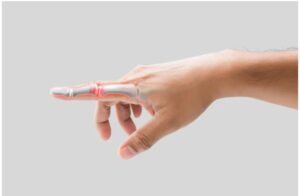
Trigger finger occurs when the tendon in the finger becomes inflamed or irritated, making it difficult to bend or straighten the finger smoothly. Early symptoms include stiffness, a popping or clicking sensation, and tenderness at the base of the finger. Recognizing these signs early can help determine when medical intervention might be necessary.
Mild Symptoms That May Not Require Immediate Medical Attention
In some cases, Trigger finger treatment symptoms are mild and may improve with rest, gentle stretching, and over-the-counter anti-inflammatory medications. If the finger only occasionally clicks without pain or significant movement restriction, monitoring the condition at home may be sufficient initially.

When Persistent Pain and Stiffness Warrant a Doctor’s Visit?
If pain and stiffness in the affected finger persist for several weeks or worsen over time, it’s important to seek medical evaluation. Persistent discomfort or inability to fully straighten or bend the finger could indicate worsening inflammation requiring professional treatment.
Signs That Trigger Finger Is Progressing
Progression of trigger finger may include increased locking of the finger in a bent position, noticeable swelling, or the finger becoming stuck and unable to move without force. These symptoms suggest the condition is advancing and should be assessed by a healthcare provider promptly.
Impact on Daily Activities as a Trigger for Medical Help
When trigger finger begins to interfere with daily tasks such as gripping objects, typing, or writing, it can significantly affect quality of life. Difficulty performing normal hand movements is a clear sign that medical treatment is needed to prevent further damage.
When to Consider Non-Surgical Treatments?
Medical professionals can offer non-surgical options such as corticosteroid injections, splinting, or physical therapy. Early consultation allows for these treatments to be initiated before the condition becomes severe, often reducing the need for surgery.
Indicators That Surgery May Be Necessary
If conservative treatments fail to relieve symptoms or if the finger becomes permanently locked, surgery may be required to release the tendon and restore normal movement. Prompt evaluation helps ensure timely surgical intervention when necessary.
Risks of Delaying Medical Care for Trigger Finger
Ignoring worsening symptoms can lead to increased pain, permanent finger stiffness, or loss of function. Early medical intervention reduces these risks and increases the chance of a full recovery without invasive procedures.
Finding the Right Specialist for Trigger Finger Treatment
Seeing a hand specialist or orthopedic surgeon experienced in trigger finger treatment can ensure accurate diagnosis and appropriate care. They can guide patients through the best treatment options tailored to the severity of the condition.
Conclusion
Seeking medical help at the right time is crucial for managing trigger finger effectively. Early diagnosis and treatment can prevent the condition from worsening, reduce pain, and restore normal finger function. If symptoms persist, interfere with daily activities, or worsen despite home care, consulting a healthcare professional is essential to achieve the best outcomes.